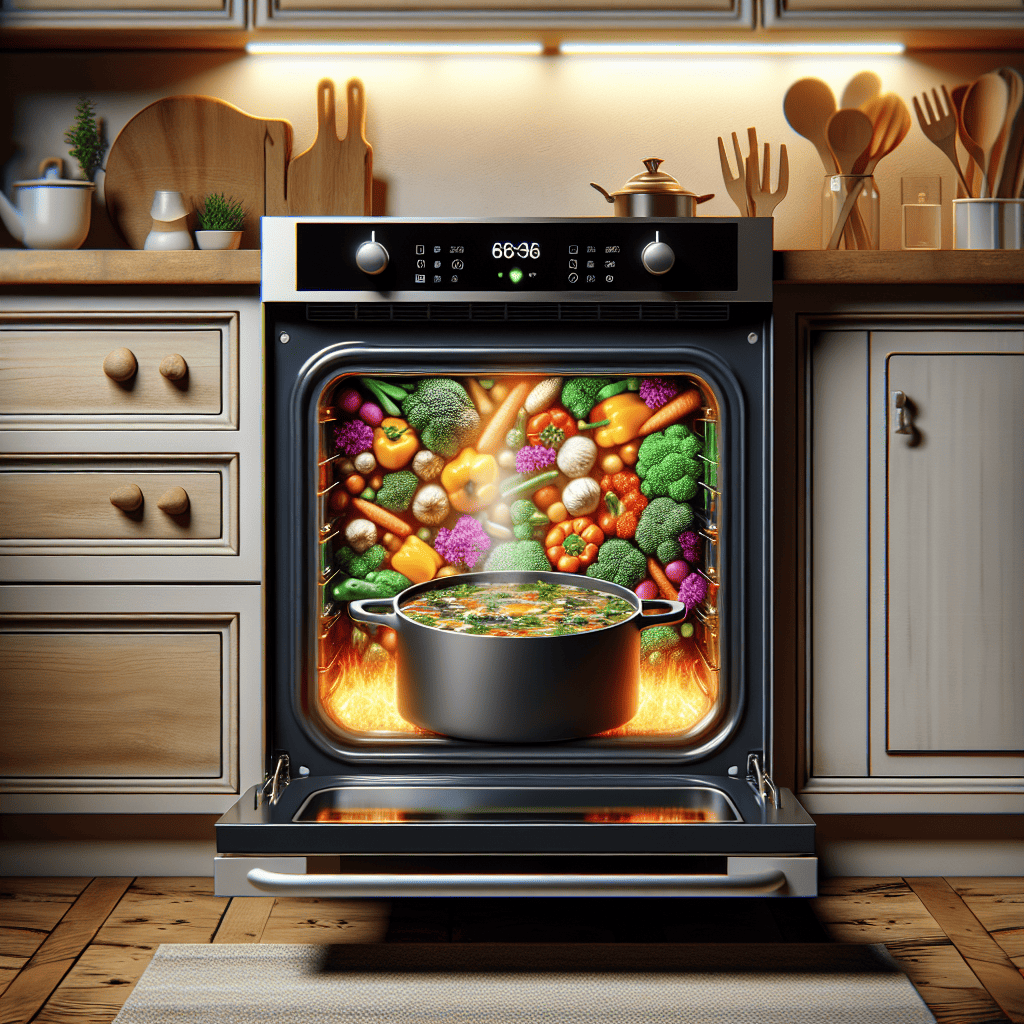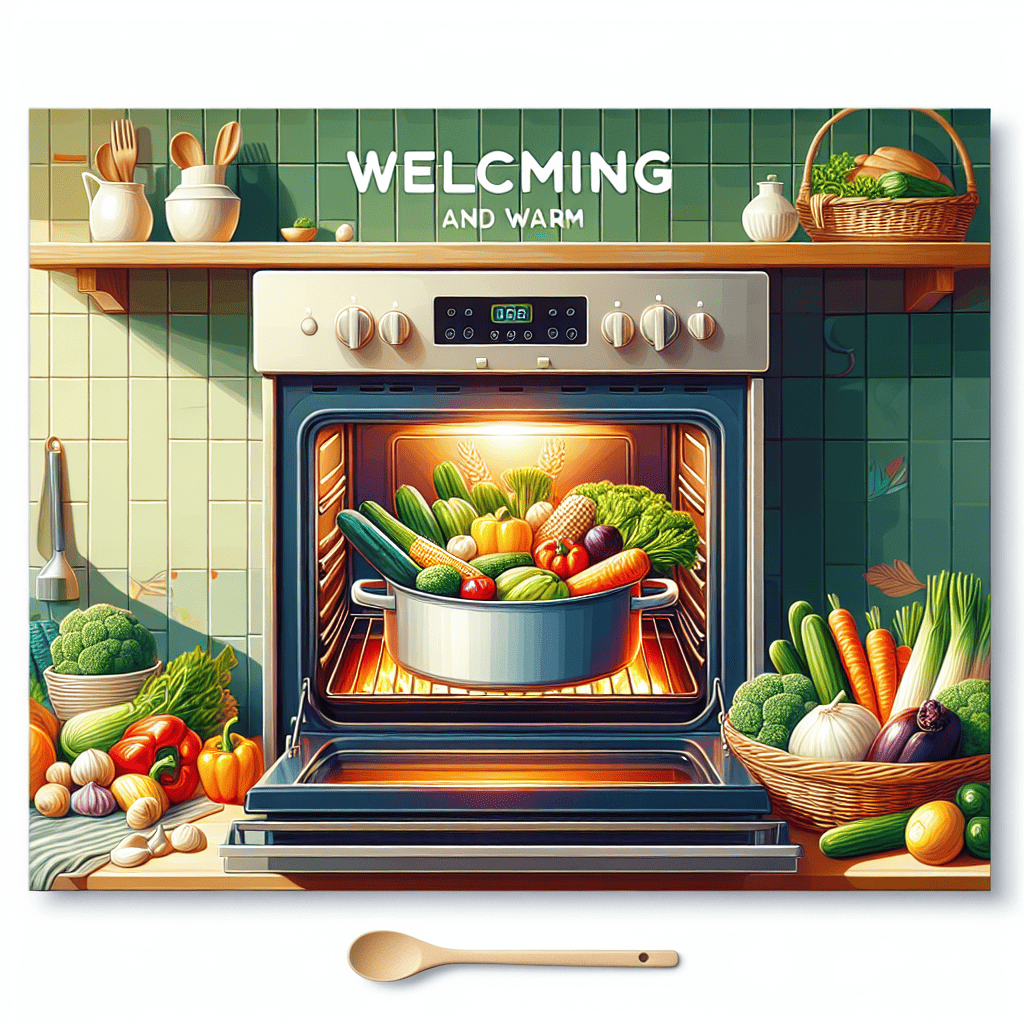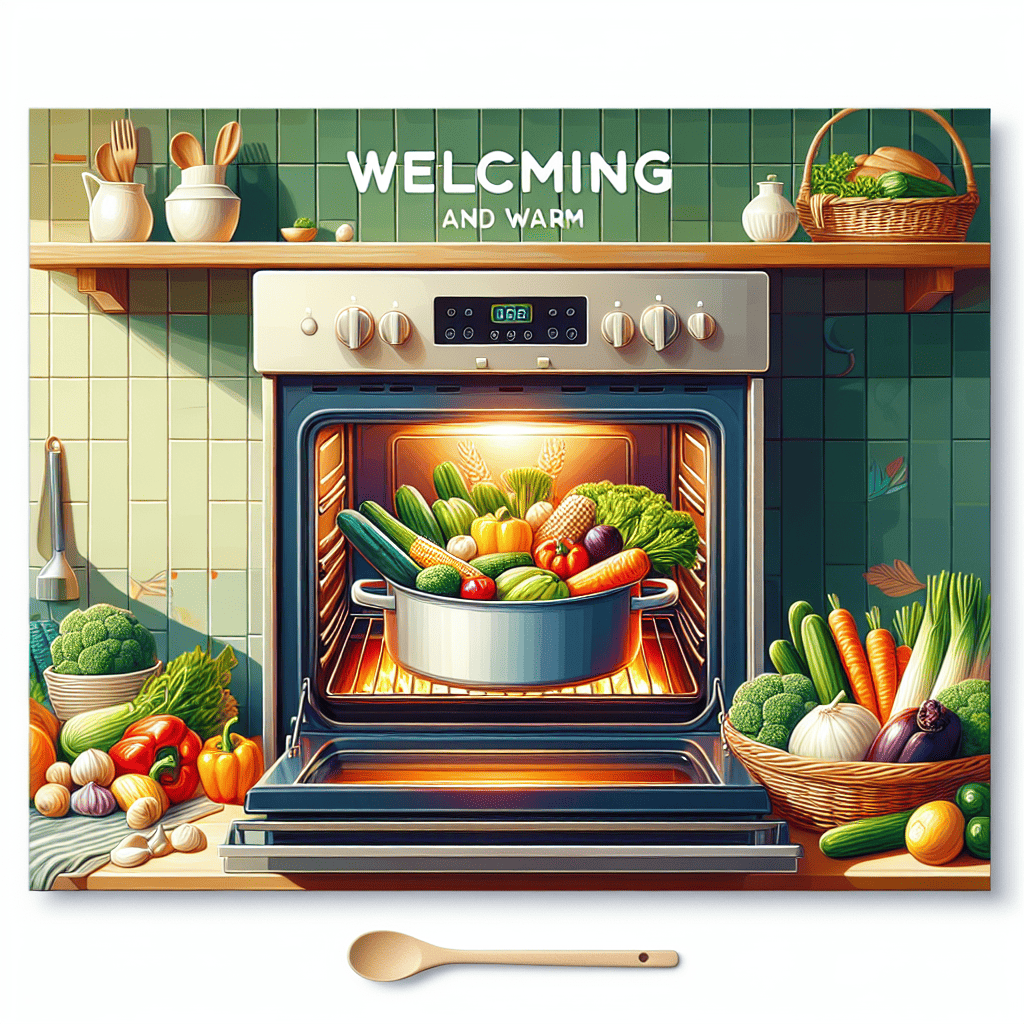Imagine coming home to the aroma of a tender pot roast or a savory stew that’s been slowly cooking to perfection, all while retaining the precious nutrients your body craves. Well, with the advent of smart ovens, like the Breville Smart Oven or the Cuisinart TOA-60, this dream can be your everyday reality. By leveraging the precise temperature control and programmable features of these innovative appliances, you can transform your approach to meal prep, ensuring that every dish you craft is both deliciously flavorful and rich in vitamins and minerals. The article “Slow Cooking In A Smart Oven for Nutrient-Rich Dishes” walks you through the benefits of using these cutting-edge kitchen allies to enhance your culinary creations without sacrificing the wholesome goodness of your ingredients.
Understanding Slow Cooking
The Basics of Slow Cooking
You’ve probably heard of slow cooking, the culinary art of simmering your ingredients at a lower temperature over an extended period. This method is often used in stews, soups, and braises, you can think of it like giving flavors time to mingle and get to know each other really well. Your patience pays off with tender meats and deep, rich flavors that can’t be matched by any quick cooking method.
Benefits for Nutrient Retention
One of the lesser-known superheroes of slow cooking is its ability to retain nutrients that high-heat methods can destroy. When you cook slowly, vitamins and minerals are less likely to break down since the cooking environment is way gentler. This means you aren’t just getting more flavor, you’re actually getting more of the good stuff from your food.
Comparing Slow Cooking to Other Methods
Your classic baking or grilling methods, while great for certain dishes, often use high temperatures that can zap moisture and delicate nutrients. Slow cooking, on the other hand, is like a low-temp cuddle for your food, preserving its natural goodness. Plus, as the moisture can’t escape as easily, you’ll find your meats don’t dry out, and you’re rewarded with a dish that’s moist and succulent.
Overview of Smart Ovens
What is a Smart Oven?
A smart oven is the Iron Man suit of your kitchen. It does everything your regular oven does, but with a few extra superpowers. Equipped with Wi-Fi connectivity and various advanced features, it can preheat, bake, broil, and yes, even slow cook, all while you control it with your smartphone. It’s like having a personal chef that fits in on your counter.
Key Features of Smart Ovens for Slow Cooking
These futuristic appliances have key features like temperature probes, humidity sensors, and the ability to adjust cooking modes mid-process. They make sure your slow-cooked dish stays within the magic temperature range, cooking evenly and maintaining moisture.
Popular Smart Oven Brands
When it comes to picking a smart oven, you’ve got options. June Oven, Breville’s Smart Oven series, and KitchenAid Smart Oven+ are a few heavy hitters in the game. They come with varying features tailored to slow cooking enthusiasts like you.

Selecting the Right Smart Oven
Criteria for Choosing a Smart Oven
When shopping for a smart oven, you want to think about size, features, and compatibility with your kitchen setup. Make sure it has the capability for low-temperature cooking required for slow cooking and an easy-to-use interface or app.
Top Picks for Slow Cooking Capabilities
If slow cooking is your main goal, look at models known for their precise temperature control. Brands like Breville and June have models explicitly praised for their slow cooking performance, ensuring even, consistent cooking for hours on end.
Budget Considerations
While smart ovens can be a bit pricier due to their advanced tech, they come in a range of prices. June offers a more compact solution that could save you some cash, while Breville’s larger Smart Oven Air with advanced features might be a splurge-worthy investment for the dedicated cook.
Preparation for Slow Cooking
Choosing the Right Ingredients
When you’re slow cooking, go for cuts of meat that are begging to be transformed by long, low heat, like chuck roasts or pork shoulders. These typically tougher cuts break down over hours into fork-tender delights. For veggies, root vegetables like carrots and potatoes hold up splendidly to a slow simmer.
Prepping Vegetables and Meats
For the best outcome, sear meats to develop a flavor-packed crust. With vegetables, chopping them into uniform pieces helps ensure they cook evenly. And honestly, there’s something almost meditative about prepping everything, knowing you’re setting the stage for something delicious.
Setting Up Your Smart Oven
Lay down your ingredients in the smart oven’s pot or cooking vessel, add your liquid (broth, water, or a flavorful wine works wonders), and get ready to let your smart oven do its magic. The setup is simple, but the outcome? Out of this world.

Programming Your Smart Oven for Slow Cooking
Temperature and Time Settings
On most smart ovens, you can set the temperature as low as about 200°F (93°C) for slow cooking. You’ll typically slow cook for anywhere from 4 to 10 hours, depending on the recipe and how hangry you predict you’ll be later.
Customizable Smart Oven Programs
The beauty of a smart oven is that you can adjust the settings to match your recipe precisely. On top of that, many smart ovens have preset programs designed for various dishes, making the cooking process a no-brainer.
Remote Monitoring and Adjustments
Say you’re knee-deep in a Netflix binge, but you need to check on your pot roast. No sweat. With your smart oven’s app, you can peek at the temperature, make adjustments, and keep everything on track from the comfort of your couch.
Nutrient-Rich Recipes for Slow Cooking
Recipes that Maximize Nutrient Preservation
From a hearty beef stew packed with beta-carotene-rich carrots and iron-filled beef to a vegan chili brimming with protein-packed beans and antioxidant-loaded tomatoes, slow cooking maximizes the nutrients in your ingredients. You’re crafting meals that don’t just satisfy your taste buds but also nourish your body.
Vegetarian and Vegan Options
Plant-based eaters, rejoice! Slow cooking isn’t just for meat. Lentil curries, vegetable tagines, and so many other dishes are perfect for your slow-cooked, plant-based needs. The slow cook time allows flavors to develop fully without any meat on the scene.
Meat-Based Slow Cooked Dishes
For those who love a bit of animal protein, imagine a pork shoulder gently breaking down into a tender pull-apart treat or a chicken casserole where the meat practically melts off the bones. These dishes showcase slow cooking’s ability to turn a simple piece of meat into a show-stopper.
Why Slow Cooking Preserves Nutrients
The Science Behind Nutrient Preservation
It all comes down to heat sensitivity. Vitamins like C and many B vitamins are shy; they prefer the mild temperatures of slow cooking to the harshness of high heat, which can be a bully, breaking them down and diminishing their presence in your meal.
The Role of Temperature in Nutrient Retention
Slow cooking usually happens at temperatures below boiling, allowing nutrients to stay stable and not run off into steam. It’s a gentle environment that keeps the integrity of the vitamins and minerals in your food.
Comparison with High-Heat Cooking Methods
High-heat cooking methods often happen fast and furious, which might work for a speedy meal, but can also mean a loss of nutritional value. When you slow cook, you’re ensuring that the vitamins and minerals have a fighting chance to make it onto your plate.
Maximizing Flavor While Slow Cooking
Marinating for Depth of Flavor
Marinating isn’t just for grilling. Letting your meat sit in a bath of spices and acidic components like vinegar or citrus juices amplifies flavor and can kickstart the tenderizing process before the slow cooking even begins.
Layering Spices and Herbs
Think of spices and herbs as your flavor builders. They’re like the cast of a great play, each one contributing to the storyline of your dish. Adding them in stages can create a depth of flavor that is complex and satisfying.
Utilizing Natural Juices and Reduction Techniques
As everything simmers away, your ingredients are giving off their best in the form of juices. These can be reduced at the end of your cooking to create a sauce that’s concentrated and packed with flavor.
Smart Oven Maintenance for Optimal Performance
Regular Cleaning Routines
Keeping your smart oven clean isn’t just a matter of hygiene; it’s about performance. Residue from previous cooks can interfere with sensors and affect the taste of your next masterpiece. A routine wipe-down post-cooking helps maintain its precision.
Addressing Common Issues
Every now and again, your smart oven might act up, like any tech. It might be connectivity issues or wear and tear on components like seals or heating elements. Consult your user manual and reach out to customer service for your brand if needed.
Ensuring Longevity and Efficiency
To keep your smart oven in tip-top shape, you want to ensure it’s updated with the latest software, and that you’re following manufacturer guidelines for care. It’s like sending it for a spa day, which means better performance and a longer life.
Conclusion: Embracing Smart Technology
The Future of Cooking with Smart Appliances
Smart ovens are just the beginning. The future is all about kitchen gadgets that communicate with each other, creating a seamless cooking experience. Imagine a fridge that knows what’s inside and suggests recipes which your oven can then preheat for. It’s a new era in the kitchen, and you’re part of it.
The Benefits of Slow Cooking
Slow cooking in your smart oven combines tradition with innovation. You get the nutrient-rich, flavor-packed meals that our ancestors loved, but with the precision and ease that modern technology brings. It’s the best of both worlds on a plate.
Tips for Getting Started with Your Smart Oven
Dive in by trying a simple recipe, using your oven’s presets, and not being afraid to experiment. The more you use your smart oven, the more intuitive it will become, and the more you’ll learn about its capabilities. It’s a journey of delicious discovery, and your kitchen is the launchpad.

